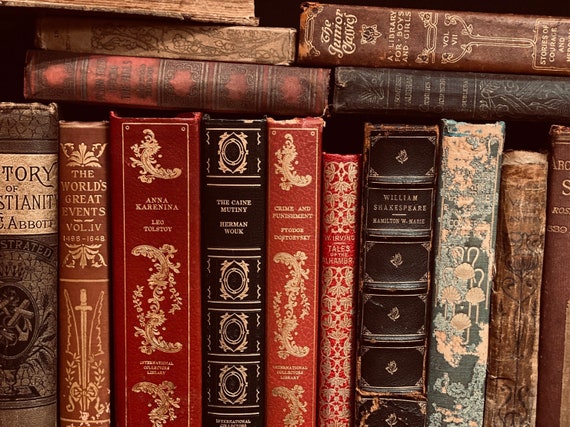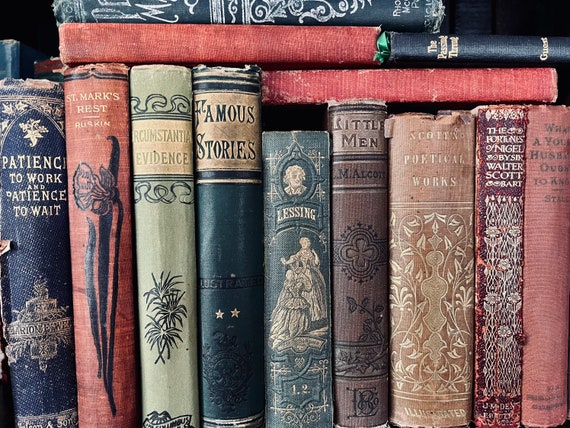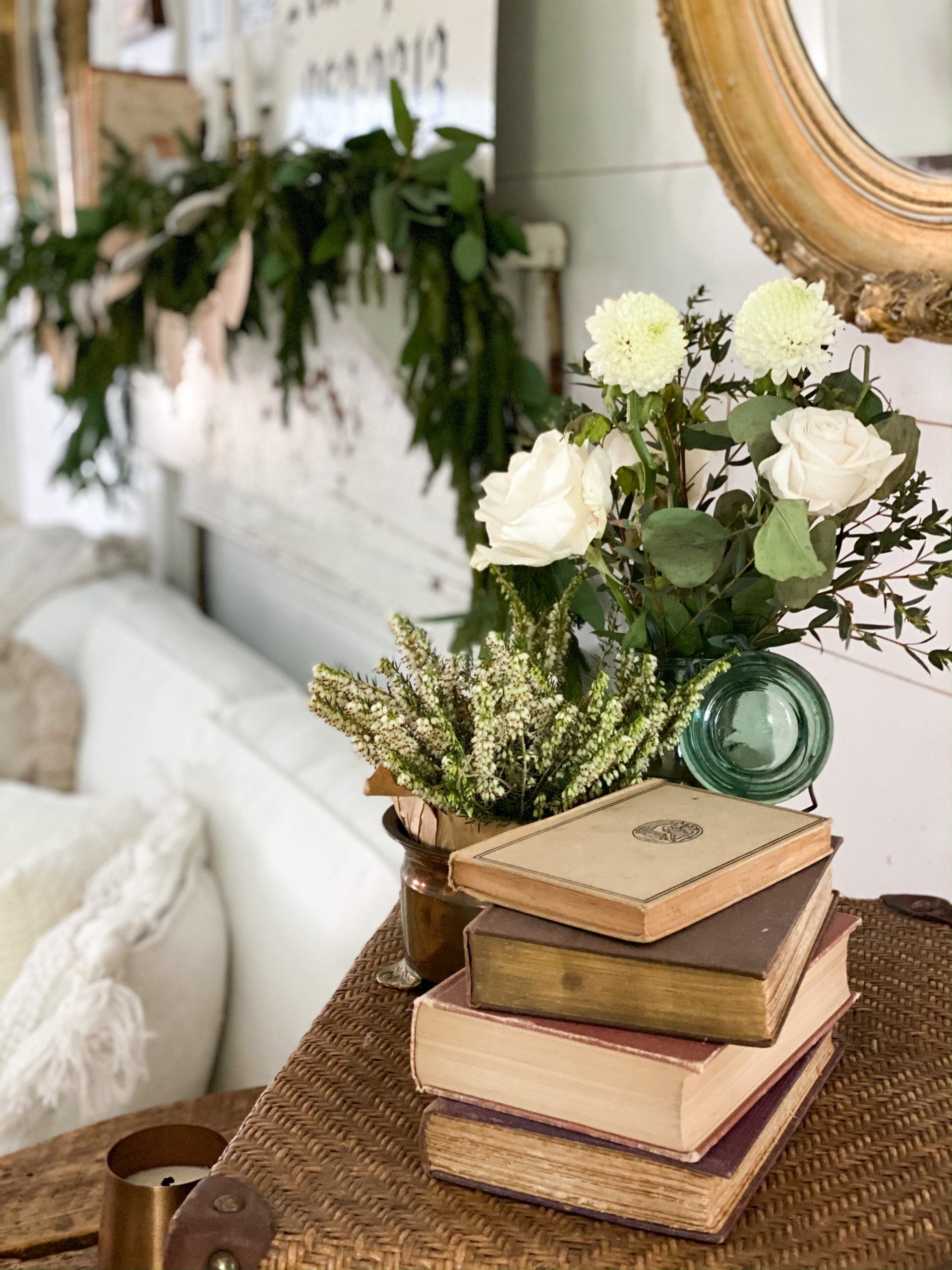Antique books are more than just relics of the past; they embody history, culture, and craftsmanship while adding a layer of sophistication to your home decor. As a collector and lover of literature, I’ve personally found that incorporating antique books into my living space not only uplifts the aesthetic but also sparks conversations and curiosity among guests. In this article, we’ll delve into the world of antique books for decor, discussing their history, styles, benefits, and practical tips for integrating them into your home.
Why Choose Antique Books for Home Decor?
Antique books provide a unique visual and tactile element to your space. Here are several reasons why they stand out:
Historical Significance
Every antique book carries a story; its age and origin can be traced back through time, making it a conversation starter in your home.
Unique Aesthetics
The colors, textures, and designs of antique book covers add depth and character to any room. Often, they have beautiful bindings and illustrations that serve as art pieces.

Versatile Styling Options
Whether you prefer a classic library feel or a modern eclectic vibe, antique books can complement any decor style. They can be stacked, displayed on shelves, or used as centerpieces.
The History of Antique Books

What Constitutes an Antique Book?
Generally, a book is considered antique if it is over 100 years old. However, some collectors may also consider certain editions or first prints from the early 20th century as antique.
The Evolution of Book Design
Antique books come in various designs and textures. Understanding their evolution can help you appreciate their value:
- Medieval Manuscripts: Handwritten books, often illuminated with gold leaf.
- Leather-bound Books: Popular in the 18th and 19th centuries, known for their durability and elegance.
- Art Deco and Modernist Editions: Characterized by innovative designs and materials from the early to mid-20th century.

Choosing the Right Antique Books for Your Decor
Assessing Your Space
Before you start collecting, consider the space where you want to display the books. Factors to think about include:
- Room size and style
- Color palette
- Available shelving or display options

Types of Antique Books to Consider
1. Novels and Literature
Classic literature can provide a timeless appeal. Look for well-known authors such as Jane Austen, Charles Dickens, or Mark Twain.

2. Rare Editions
First editions or limited printings can be particularly valuable and make a statement piece.
3. Decorative Bindings
Books with ornate covers can serve as focal points in your decor scheme.

4. Illustrated Books
Books with illustrations or engravings can add visual interest and charm.
Creative Ways to Display Antique Books

Bookshelves and Nooks
Using bookshelves is a classic way to display antique books. Mix books with decorative objects like plants or framed art to create a curated look.
Stacking and Layering
Stacking books horizontally can create a layered effect, especially when paired with decorative items on top. For instance:
- Use a stack as a base for a small vase.
- Layer books in a decorative tray.
Table Centerpieces
Place antique books on coffee tables or dining tables as an elegant centerpiece. Combine them with candles or flowers for added ambiance.
Wall Displays
Consider using antique books in wall displays. They can be arranged on floating shelves or within shadow boxes for a unique look.
Pros and Cons of Using Antique Books in Your Decor
Pros
- Adds character and warmth to your space.
- Unique conversation starters.
- Eco-friendly decor option.
Cons
- Cost can be high depending on rarity.
- May require special care to preserve.
- Not suitable for all families (e.g., households with young children).
Maintaining Your Antique Books
To keep your antique books looking their best, follow these maintenance tips:
Proper Storage Conditions
- Keep them in a cool, dry place away from direct sunlight.
- Avoid humidity, which can cause mold and deterioration.
Cleaning and Repairing
Use a soft, dry cloth for dusting. If a book gets damaged, consult a professional book conservator for repairs.
Where to Buy Antique Books
Local Antique Shops
Local shops often have a curated selection, and you can examine the books in person.
Online Marketplaces
Websites like eBay, Etsy, or specialized antique book dealers can provide a wider range of options.
Auction Houses
For rare and high-value books, auctions can offer unique finds. Research houses that specialize in rare books.
How to Identify Valuable Antique Books
Signs of Value
- Condition: The better the condition, the higher the value.
- Edition: First editions and limited prints are generally more sought after.
- Provenance: A book’s history, including previous ownership, can increase value.
Evaluation Resources
Consider consulting price guides or professional appraisers for detailed evaluations.
Conclusion
Integrating antique books into your home decor can transform a space, offering not only beauty but also a glimpse into the past. Whether you choose to display them in creative ways or keep them as treasured possessions, their charm is undeniable. As someone who has spent years curating my collection, I can attest to the joy these pieces of history bring. So why not start your own collection today and see how antique books can enhance the narrative of your home?
FAQs about Antique Books in Home Decor
1. Are antique books expensive?
The price of antique books varies widely based on condition, rarity, and demand. While some can be quite costly, there are still many affordable options available.
2. How can I tell if an antique book is a first edition?
Look for specific identifiers such as a number line on the copyright page, which often indicates the edition. Research online or consult experts for confirmation.
3. Can antique books be used in children’s rooms?
While it is possible to use antique books in children’s spaces, ensure they are secured in a way that prevents damage or hazards. Consider using reproduction books for play areas instead.
4. What if my antique book is damaged?
For minor issues, you can often fix them yourself carefully. For serious damage, consult a professional conservator.
5. How do I prevent my antique books from fading?
Keep them out of direct sunlight and maintain a stable environment away from moisture.